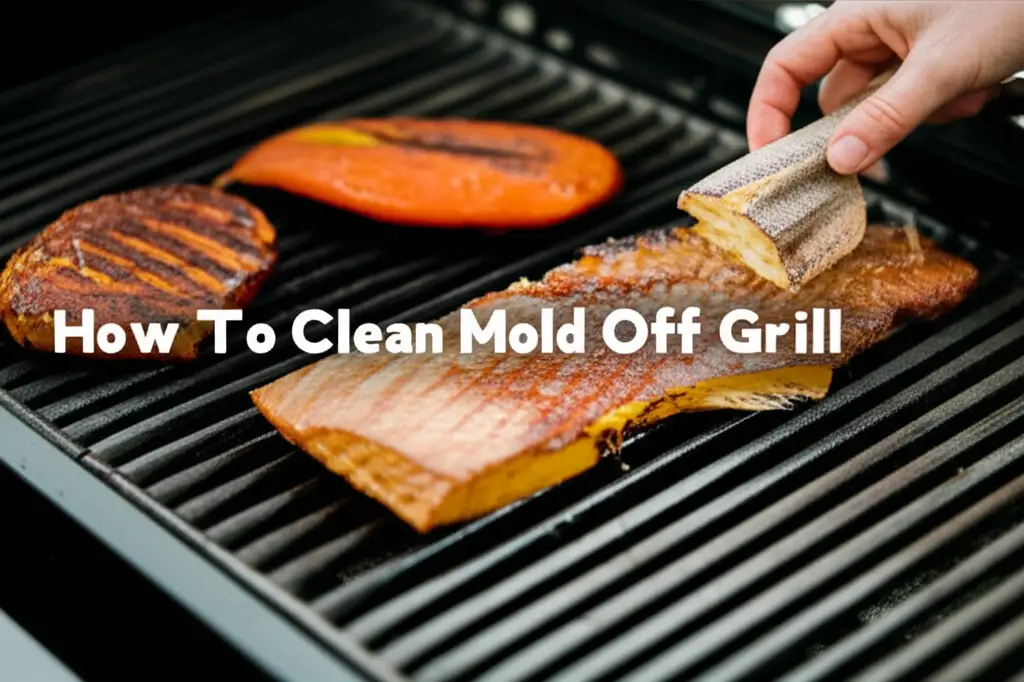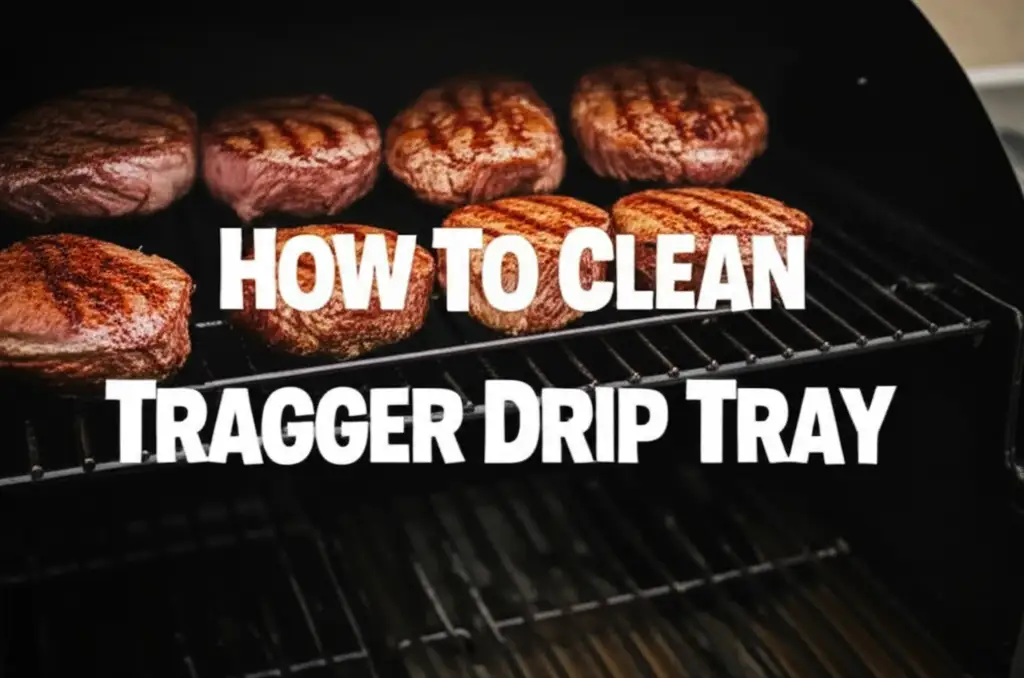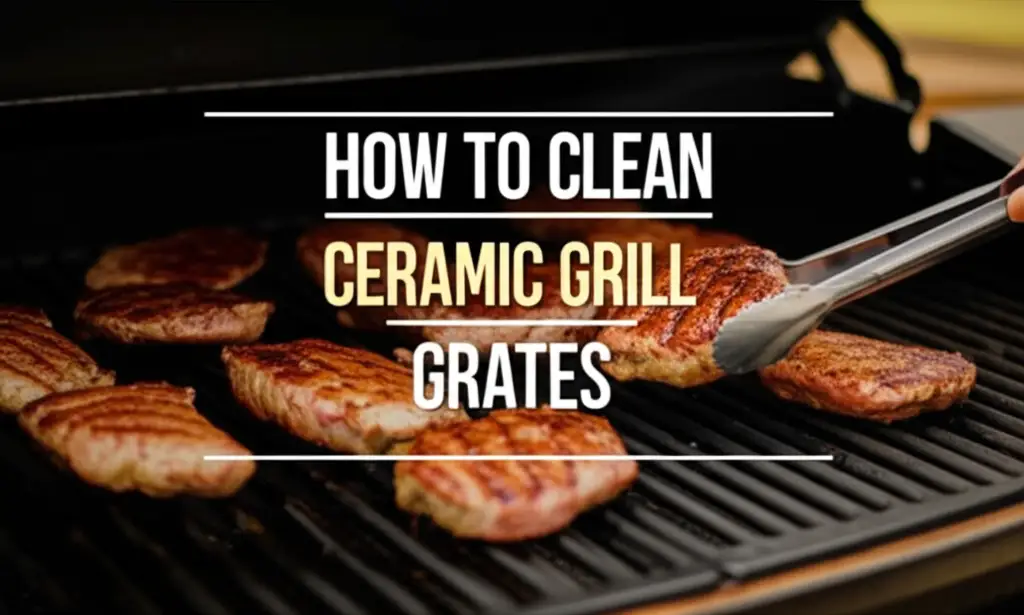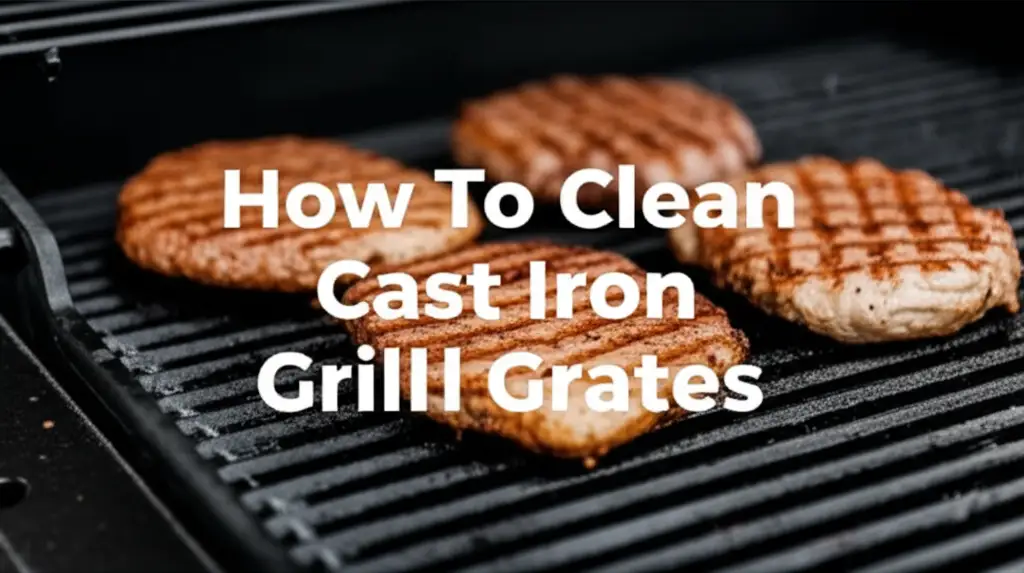· Grill Maintenance · 10 min read
How To Clean Flavorizer Bars
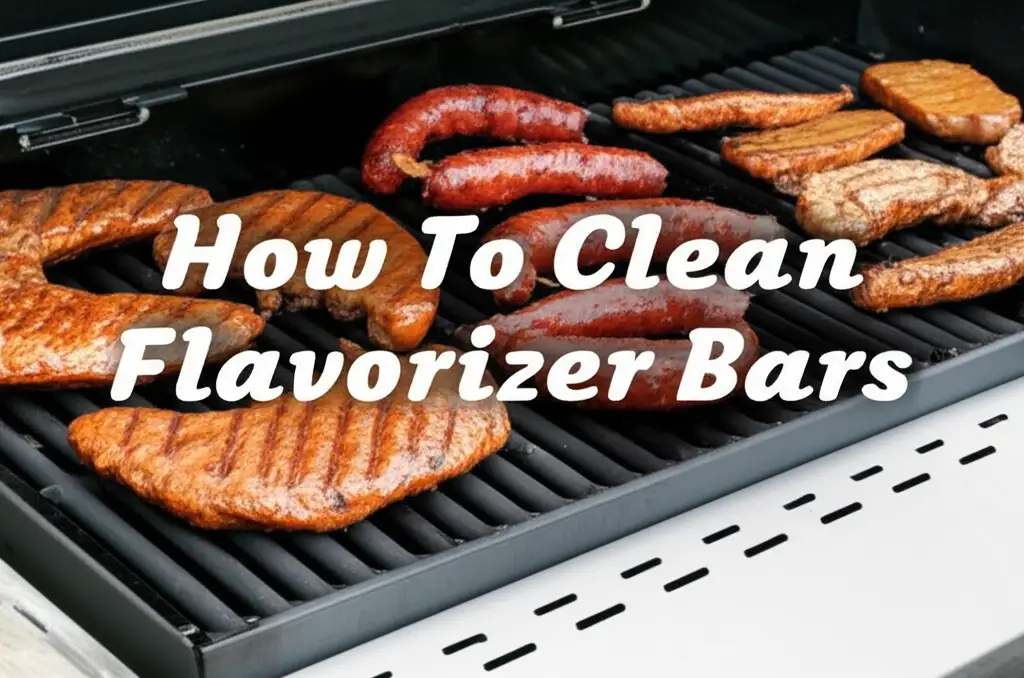
Keep Your Grill Hot: How To Clean Flavorizer Bars
Have you ever wondered why your grilled food sometimes tastes off, or why your grill has sudden flare-ups? The secret often lies beneath the grates, with your flavorizer bars. Learning how to clean flavorizer bars is a simple yet vital step in maintaining your gas grill. These important components work hard, catching drippings and turning them into flavor-enhancing smoke. Neglecting them impacts your grill’s performance and the taste of your food. This guide will walk you through the process, ensuring your barbecue stays in top shape for many delicious meals.
Takeaway
Keeping your flavorizer bars clean is simple. You just need to follow a few steps. Regular cleaning extends your grill’s life. It also improves your food’s flavor.
- Remove the bars carefully.
- Scrape off large debris.
- Soak and scrub with appropriate cleaners.
- Rinse thoroughly and dry completely.
- Perform routine checks and light cleanings.
Flavorizer bars need regular cleaning. This prevents flare-ups. It helps ensure even heat distribution. It also turns drippings into flavorful smoke. You remove loose debris with a grill brush. Then, you scrub with warm soapy water or a specialized degreaser. Rinse them well and dry completely before putting them back.
Understanding Flavorizer Bars: Why Clean Them?
Flavorizer bars are V-shaped metal pieces. They sit between your grill grates and the burners. They protect the burners from grease and food drippings. When drippings hit these hot bars, they vaporize. This creates the smoky flavor we love in grilled food.
Over time, grease and food bits build up. This accumulation can block proper heat distribution. It leads to hot spots and cold spots on your grill. Dirty bars also cause more flare-ups. This happens when too much grease ignites. Regular cleaning solves these problems. It ensures your grill cooks food evenly. It also helps you avoid dangerous flare-ups.
I clean my flavorizer bars often because it keeps my grill working well. A clean grill is a safe grill. It also makes food taste better. Neglecting them leads to rust and damage. This shortens the lifespan of your grill. Maintaining them properly saves you money in the long run.
Gathering Your Tools: Essential Supplies for Cleaning Flavorizer Bars
Before you begin cleaning, gather the right tools. Having everything ready makes the job easier and faster. Safety gloves protect your hands from grime and cleaning solutions. A sturdy grill brush is essential for scrubbing. I prefer a brush with stiff wire bristles for tough jobs. However, a nylon brush is better for delicate surfaces.
You will need a scraper to remove baked-on residue. A large bucket or basin is perfect for soaking the bars. Dish soap and warm water are standard cleaning agents. For tougher grease, a specialized grill degreaser works wonders. White vinegar and baking soda are natural alternatives. They tackle grease and rust effectively. Finally, cloths or sponges help with rinsing and drying.
Make sure your grill is completely cool before you start. This prevents burns. Always wear protective gloves. Some cleaning agents can irritate skin. Organize your tools nearby. This saves time and effort during the cleaning process. Proper tools ensure a thorough and safe cleaning experience.
Step-by-Step Guide: How To Clean Flavorizer Bars Deeply
Cleaning your flavorizer bars might seem like a big job. It is actually quite straightforward. First, make sure your grill is completely cool. This is important for safety. Remove the cooking grates from your grill. Set them aside. Now, carefully lift out each flavorizer bar. Note their orientation if they are not uniform.
Next, use a grill brush or scraper to remove loose food debris and charred bits. Get rid of as much as you can. For stubborn, baked-on grease, try soaking the bars. Fill a large bucket with hot water and a good amount of dish soap. You can also add a cup of vinegar for extra degreasing power. Let the flavorizer bars soak for at least 30 minutes. For really tough grime, let them soak overnight.
After soaking, scrub each bar thoroughly. A wire brush works well for most materials. For porcelain or ceramic bars, use a soft-bristled brush or sponge to avoid scratches. Pay attention to the edges and crevices. Rinse the bars completely under running water. Make sure no soap residue remains. Dry them very well with a clean cloth. Moisture causes rust. Finally, place them back into your grill. Remember their original position for optimal heat distribution. This deep cleaning helps your grill perform its best, much like cleaning the bottom of a pan makes cooking easier. how to clean bottom of pan
Specific Cleaning Methods for Different Flavorizer Bar Materials
Flavorizer bars come in various materials. Each type needs specific care. Using the wrong cleaning method can cause damage. Knowing your material helps extend the bars’ life. It ensures effective cleaning.
Cleaning Cast Iron Flavorizer Bars
Cast iron flavorizer bars are durable. They retain heat well. However, they are prone to rust. Avoid harsh soaps if possible. These strip the seasoning. After removing loose debris, scrub with a stiff brush. For rust spots, make a paste of baking soda and water. Apply it to the rust. Let it sit for 20 minutes. Scrub the rust away with a non-abrasive pad. Rinse thoroughly. Dry immediately and completely. I often put them back in the grill and turn the burners on low for a few minutes. This ensures they are bone dry. After drying, apply a thin layer of cooking oil. This re-seasons the cast iron. It protects against future rust. This process is similar to caring for a baking steel. how to clean baking steel
Cleaning Stainless Steel Flavorizer Bars
Stainless steel flavorizer bars are popular. They resist rust better than cast iron. They are easier to clean. Use a stainless steel grill brush or a stiff nylon brush. Scrub off food residue. For heavy grease, a warm soapy water solution works well. You can also use a degreaser designed for grills. Avoid abrasive scrubbers. These can scratch the surface. After scrubbing, rinse thoroughly with clean water. Dry them completely with a soft cloth. You can even use a vinegar solution for a streak-free shine. This is like cleaning glass with vinegar. how to clean glass with vinegar
Cleaning Porcelain-Enameled Flavorizer Bars
Porcelain-enameled bars have a protective coating. This coating is fragile. Never use a wire brush on them. It will chip the enamel. Use a soft-bristled brush or a sponge. Warm soapy water is usually enough for these bars. For stubborn areas, use a mild degreaser. Apply it gently. Let it sit for a few minutes. Then wipe it clean. Rinse well. Dry completely. Chipped enamel exposes the metal underneath. This can lead to rust. Be gentle when handling them.
Cleaning Ceramic Flavorizer Bars
Ceramic bars are very delicate. They are often found in higher-end grills. They break easily if dropped. They scratch with abrasive tools. Use only soft brushes or cloths. Warm water and mild dish soap are your best bet. Gently wipe away any residue. Avoid scrubbing too hard. Rinse very carefully. Let them air dry completely before returning them to the grill. Handle them with extreme care at all times.
Preventative Measures: Keeping Flavorizer Bars Cleaner Longer
Preventing buildup is better than deep cleaning. Simple habits make a big difference. I always follow a few easy steps. These keep my flavorizer bars in good shape between deep cleans.
First, always preheat your grill. Run the burners on high for 10-15 minutes before cooking. This burns off some food residue from previous cooks. After cooking, turn the heat to high again for about 5-10 minutes. This helps incinerate any remaining food bits. Then, use your grill brush to scrape off the loosened char. Do this while the grill is still warm. It is much easier to clean when warm.
Manage grease properly. Trim excess fat from meats before grilling. Use drip pans for fattier foods. This reduces the amount of grease hitting the flavorizer bars. A clean grill grates helps too. Less dripping from grates means less on bars. Also, invest in a good grill cover. This protects your grill from weather and moisture. It prevents rust and dirt accumulation when not in use. Regular, quick cleans after each use save hours of deep cleaning later. This helps your grill last longer.
Troubleshooting Common Flavorizer Bar Issues
Sometimes, despite your best efforts, problems arise. Flavorizer bars can develop heavy rust or stubborn grease. Knowing how to troubleshoot these issues saves you time and money. Do not just throw them away.
Dealing with Heavy Rust Buildup
Heavy rust on flavorizer bars affects performance. It can flake onto your food. For severe rust, a stronger approach is needed. First, try the baking soda paste method mentioned earlier. If that does not work, you can use a wire brush attached to a drill. Use this very carefully. It removes stubborn rust but can also remove seasoning or coatings. Always wear eye protection. After removing rust, especially on cast iron, you must re-season the bars. Apply a thin layer of cooking oil. Heat the bars in the grill until the oil smokes. This protects them from future rust.
Removing Persistent Grease
Some grease seems impossible to remove. For persistent, baked-on grease, try a commercial grill degreaser. Follow the product instructions carefully. Many require soaking for a period. Another effective solution is a paste made from baking soda and a small amount of water. Apply the thick paste to the greasy areas. Let it sit for several hours, or even overnight. The baking soda helps lift and absorb the grease. Then, scrub vigorously with a stiff brush. Rinse very thoroughly. Repeat if necessary. Hot water helps dissolve grease more effectively.
When to Replace Flavorizer Bars
Sometimes, cleaning is not enough. Flavorizer bars can warp, crack, or rust through completely. This happens over many years of use. If your bars are severely warped, they will not distribute heat evenly. This creates uneven cooking. Cracks allow direct flame to hit your food. Heavy rust that cannot be removed indicates material breakdown. If they are falling apart, it is time for new ones. Check your grill’s manual for compatible replacement parts. Replacing old bars restores your grill’s performance. It brings back that desired smoky flavor. It is an investment in your grilling experience.
FAQ Section
How often should I clean flavorizer bars?
Clean them every 3-4 uses for light grilling. If you grill often or cook fatty foods, clean them every 1-2 uses. A deep clean should happen 2-3 times per grilling season. This keeps buildup from getting out of control.
Can I put flavorizer bars in the dishwasher?
No, do not put flavorizer bars in the dishwasher. The harsh detergents and high heat can damage them. This is especially true for cast iron or porcelain-enameled bars. Dishwashers also do not clean the intense char effectively.
What causes rust on flavorizer bars?
Rust occurs when metal, especially cast iron, is exposed to moisture and oxygen. Incomplete drying after cleaning is a common cause. Lack of protective seasoning on cast iron also contributes to rust formation.
Are flavorizer bars interchangeable?
No, flavorizer bars are not universally interchangeable. They vary in size, shape, and material depending on your grill model and brand. Always check your grill’s manual or manufacturer’s website for the correct replacement parts.
What is the best way to prevent future buildup?
The best prevention is regular light cleaning. Scrape your flavorizer bars after every use while the grill is still warm. Also, preheat your grill before cooking to burn off residue. Proper grease management also helps reduce buildup significantly.
Conclusion
Keeping your flavorizer bars clean is a small task. It makes a big difference to your grilling experience. You now understand how to clean flavorizer bars effectively. This includes knowing which tools to use. You also know how to treat different materials. Regular maintenance prevents flare-ups. It ensures even heat distribution. It extends the life of your grill.
A well-maintained grill cooks better. It produces tastier food. Take the time to clean your flavorizer bars regularly. You will enjoy more consistent results. Your family and friends will notice the improved flavors. Start cleaning your flavorizer bars today. Elevate your backyard barbecue game with a cleaner, more efficient grill. Happy grilling!
- grill cleaning
- flavorizer bars
- barbecue maintenance

